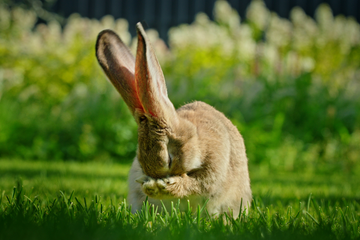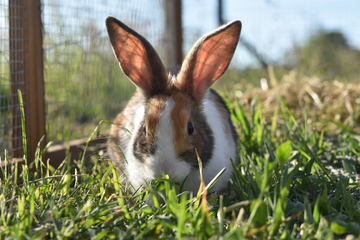What Makes Western Grown Timothy Hay Special?
As you may be aware, there are a number of factors that affect the qualities of hay that are achieved during a growing season. In fact, there are four major ones: location, microclimates, soil, and season. Understanding all of these factors will help you to grasp the reasons behind why we have transitioned to labeling our Timothy Hays according to their qualities rather than by the order by which they are harvested. It’ll also explain what makes our hay so special.
Click Here For a Guide to Understanding Your Rabbits Diet.

1. Location
We have all heard the saying: “Location, Location, Location” as being the three most important things in real estate.
The same applies to growing crops of all varieties, especially hay. High-quality forage hay can only be grown in certain climates and regions throughout the world. Timothy Hay (Phleum pratense) and Orchard Grass (Dactylis glomerata) are generally grown only in high mountain valleys, which hold the perfect conditions needed to allow the plants to thrive. Timothy Hay is a shallow-rooted plant that needs warm days and cool evenings to grow well. Additionally, high mountain valleys have harsh winters, which the rootstock does well in, but greatly reduces the ability for weeds and other pests to survive.
2. Microclimates
Altitude can cause interesting things to happen to the growth of the hay. For example, our farmer has a field that is roughly 500 feet higher in elevation than his other fields, coupled with this there is a large mountain that casts a shadow on the field during the hottest parts of the summer. The shadow allows this particular field to grow an extremely leafy second cut that can appear to most as a third cut. The field is higher in elevation and the shadow cast upon it is consistent year after year, making this field able to grow hay that looks very similar to third cut hay.
3. Soil
Timothy Hay needs a slightly acidic soil to grow well (between 5.5pH and 7.0pH). It also prefers a fine-textured soil typical of clay and loam. These conditions tend to be prevalent in volcanic regions where past volcanic activity allows the soil to have a higher acidity. The bulk of the major growing regions for Timothy Hay are in a mountainous area, especially where the mountain range is volcanically produced. To top it all off Timothy Hay loves marshy like conditions, so a shallow water table is preferred.
4. Season
Spring: Timothy Hay requires a long spring with frequent rain coupled with days of full sun. During this time the hay grows rapidly and vigorously. By mid to late June the hay has reached its maturity and is ready for its first cut. Generally, farmers will harvest the hay at this stage based on the development of the seed heads and the length of the stalk (stem). Due to the fast and vigorous growing the hay tends to be mostly stalks.
Summer: Once the hay is cut it goes into shock, where it can take 20-35 days to recover before it’s given a second cut. During this time the plant grows leaves but very little stalk (stem). Additionally, as the summer continues, the heat can slow down the growth process, in extreme cases, heat can cause the plants to go into full dormancy. The occasional summer rain shower is welcome, farmers know this so they will irrigate throughout the summer to encourage growth.
Fall: In a very, very few regions the springs start early enough and the falls run late enough for there to be enough time for the hay to fully recover for a third cutting of the hay.

"Why Is My Rabbit Licking Her Own Pee?"

Rabbit Is It Low Maintenance or More Work Than You Think?

Tips to Manage Rabbit Chewing Habits







